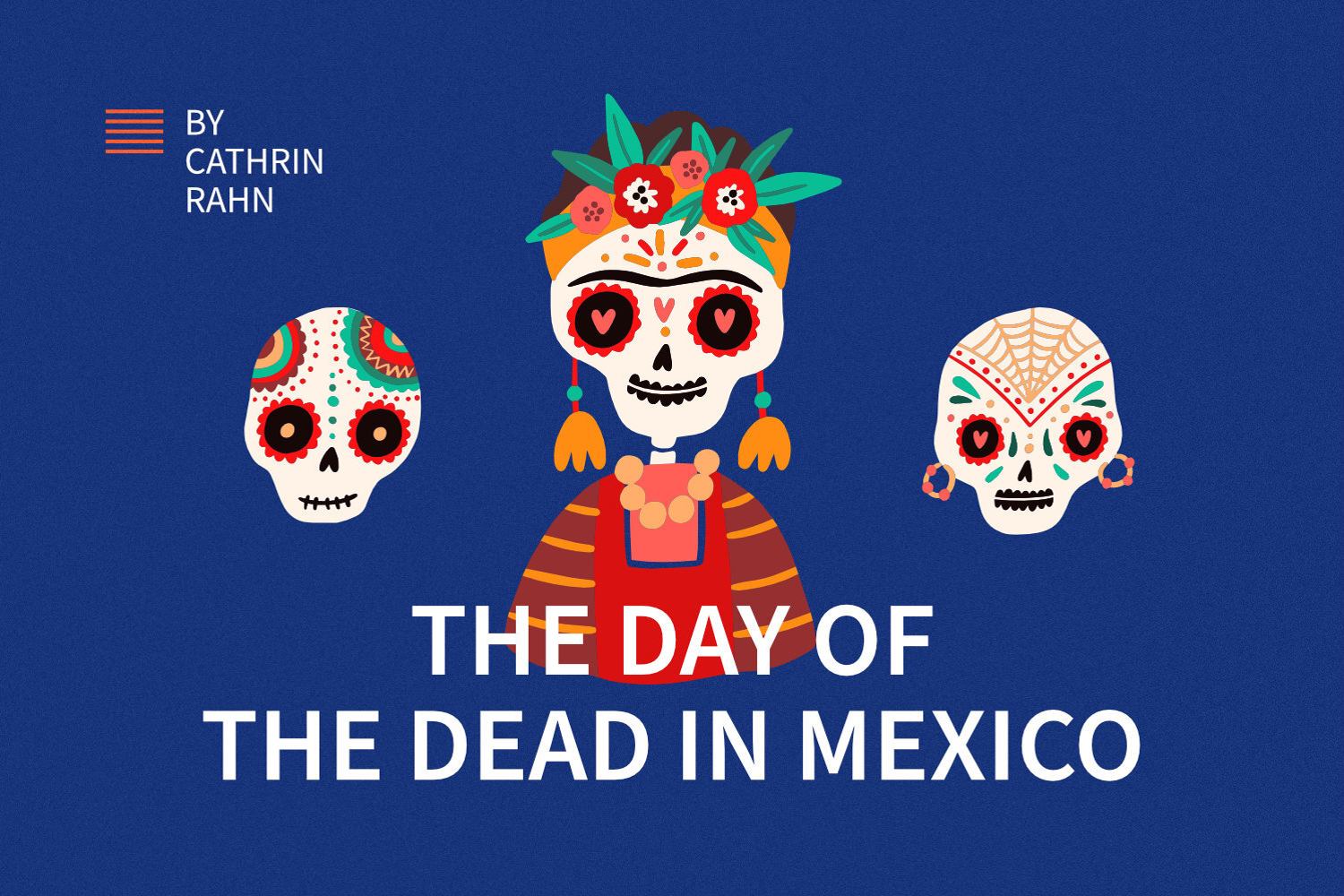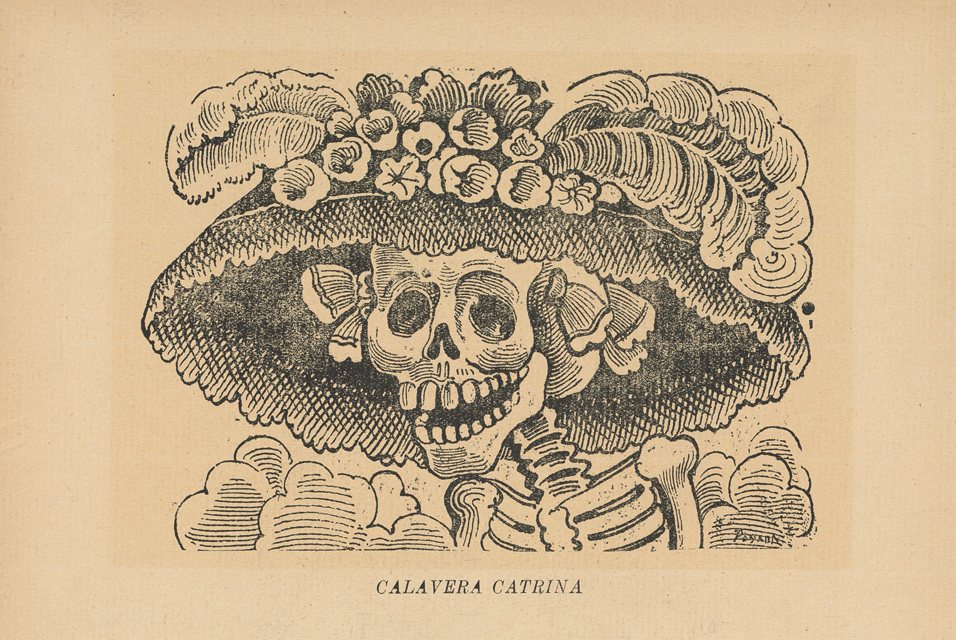by Cathrin Rahn (25.10.2022)
translation by Edd Lee (25.10.2022)
Every year on the 2nd of November, Mexico celebrates one of its most important holidays, Día de Muertos. As the name suggests, the "Day of the Dead" commemorates the deceased. But unlike many funeral and commemoration ceremonies in Europe, it is a lavish and colourful festival with great hustle and bustle on the streets, festive parades and exuberant music and dances.

According to the belief of the indigenous peoples of Mexico, the Toltecs, Aztecs, Nahua and others, the souls of the deceased come back to earth from the afterlife for a short time once a year, for thanksgiving and to celebrate a happy reunion with the living. Mourning the dead as we know it was considered disrespectful by pre-Hispanic cultures, since death was not an absolute end, but merely a phase in the long continuum of life.
This parallel with the Christian faith made it possible after the Spanish conquest and the beginning of the colonisation of Mexico at the beginning of the 16th century, to merge and continue the local traditions with the Christian church festivals of All Saints' Day and All Souls' Day.
Although the Day of the Dead is celebrated differently in different regions of Mexico, there are some recurring customs. The centre of the festivities is the richly decorated altar, Ofrenda, which is intended to welcome the deceased back to earth. For this purpose, it is adorned with gifts, such as flowers, family photos, water to quench thirst after a long journey, the favourite food of the dead, Papel Picado, ornate silhouettes made of tissue paper, and candles.
Particularly striking are the richly decorated sugar skulls called Calaveras, and the orange Tatedas, also known as marigolds, which are intended to show the souls of the deceased the way between their grave and the altar.
The main symbol of the Día de Muertos celebrations is a constant: the skeleton lady La Catrina with her large hat, created by Mexican artist José Guadalupe Posada in the early 20th century. The elegant Mexican counterpart to the pale and sinister Grim Reaper can be read as a sarcastic social commentary on the Mexican upper class's imitation of European fashions of the time. The name La Catrina derives from the then common slang word for rich.

Music and dance cannot be missed at such a lavish festival. Here, too, regional differences are clear because there is no common arsenal of songs. In particular, newer melodies have established themselves over time, which are especially popular in the big cities.
In the more rural areas, however, the traditional music of the indigenous peoples, which has been passed on from generation to generation for many centuries, is usually heard on Día de Muertos. These are often melodies to which people dance alone or in groups. The favourite music of the deceased is mostly played or sung at the altars at home or in the cemetery - be it pop, metal or traditional mariachi music.
In recent years, how versatile yet true to the zeitgeist the music for the Day of the Dead is, has really become apparent, especially after the great international success of the Disney film Coco in 2017. This moving story of the little Mexican boy Miguel is all about the traditions and events during the celebrations of Día de Muertos. Today, the film soundtrack is a great addition to the selection of popular songs for the festival, and is particularly popular at family celebrations with children.
Typical Mexican genres and folk songs also have their place. One of the most famous songs is the Ranchera El Rey by José Alfredo Jiménez from 1971 about the life and self-reflection of a macho man. The genre of the ranchera is closely linked to the traditional dance music of the mariachi bands, with their cowboy boots and wide-brimmed, decorated sombreros, which originally come from the Pacific state of Jalisco.
We use YouTube to embed video content. This Google service has its own cookies and may collect data about your activity. You can find more information in the data protection declaration of the provider. We need your consent to display YouTube videos:
Show YouTube contentIn the villages of Mexico, many tales circulate about witches, the undead, ghosts and demons, which provide the material for a number of popular folk songs. A common story is that of La Llorona, The Weeping Woman, from the Istmo de Tehuantepec region of southern Mexico.
La Llorona is a character from Latin American folklore whose legend first appears around 1550. It tells of a young and beautiful woman who, betrayed and threatened by her husband, is said to have drowned her children in a river with her own hands. Damned forever, she has been wandering up and down the banks of the river ever since, as a ghost crying, looking for her children.
Whether the song of the same name, whose origins are unknown, really sets the story of La Llorona to music, or the story of another, no less tragic life, is unclear. The desperation of the romantic figure, which can be heard and felt first-hand by all, is reflected in the restlessly swaying triplet rhythm, which is typical of the Son Istmeño genre. Traditionally, the singer’s cries are only accompanied by a small guitar ensemble.
We use YouTube to embed video content. This Google service has its own cookies and may collect data about your activity. You can find more information in the data protection declaration of the provider. We need your consent to display YouTube videos:
Show YouTube contentThe story La Bruja, The Witch, originates from the state of Veracruz, which is similar in many ways to the story of Count Dracula. According to the legend, she is also a terrifying creature that sucks the blood of her victims.
The traditional Son Jarocho setting is one of the most popular tunes of the traditional Veracruz dance, in which the dancers carry a candle or a glass on their heads. It tells the story of the ambiguity of magic and seduction - constantly alternating from the first-person perspectives of the witch and the victim.
As colourful and varied as the Day of the Dead may be celebrated in Mexico, all these different traditions, songs and festivities have one thing in common: it is always about remembering the deceased and keeping them close to your heart.
We use YouTube to embed video content. This Google service has its own cookies and may collect data about your activity. You can find more information in the data protection declaration of the provider. We need your consent to display YouTube videos:
Show YouTube content